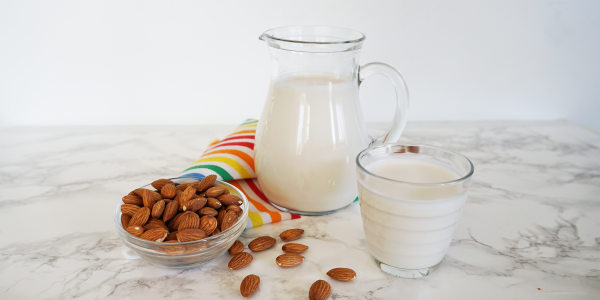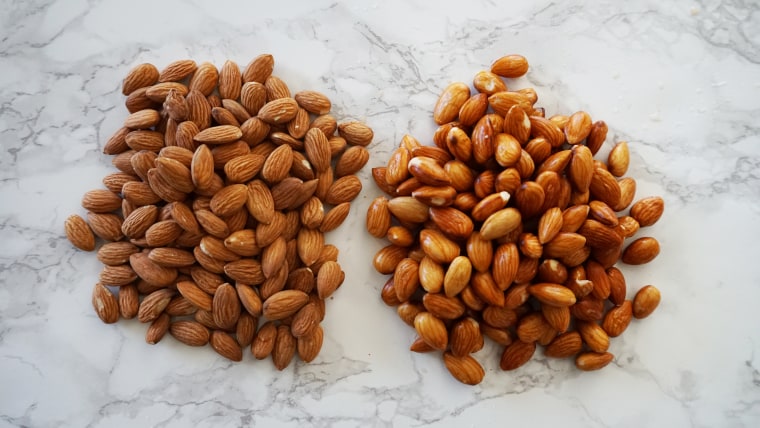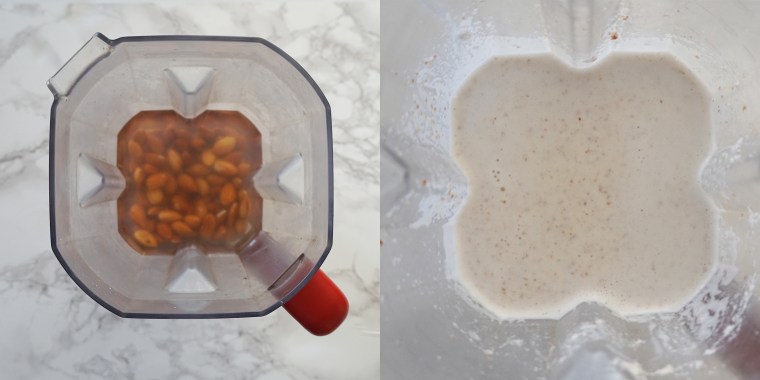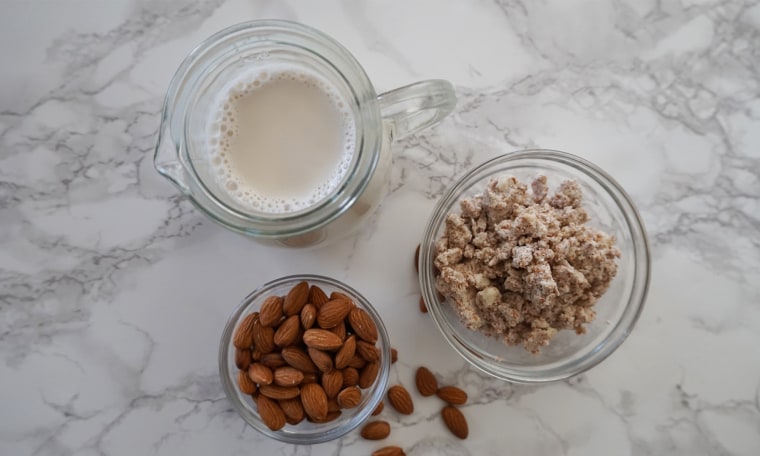What Better Cafia Almond Milk or Blue Diamond
Almond milk is everywhere these days. It's on grocery store shelves (in both the refrigerated and non-perishable sections), it's at most major coffee shops and it's constantly popping up in articles about trendy non-dairy milks.
But have you ever wondered what's actually in almond milk? Looking at the ingredient label on most store-bought versions, you may come across various sugars, oils, starches and hard-to-pronounce stabilizers.
Yet, if made it home, almond milk is really just two basic ingredients: almonds and water. While it may not be cheaper to make your own almond milk, you can control exactly what goes into it and adjust the flavor. Plus, it's it's incredibly easy to whip up.

To get started, you will need almonds, water, a blender and something to strain the nut milk. If you have some old roasted nuts lying around, save them for snacking as the almonds need to be raw and fresh in order to extract their "milk." If the nuts are too old, or have gone rancid, your milk will taste off.
1. Soak the almonds

The most important step in making almond milk is the initial soak. Place the almonds in a glass bowl and cover with at least two inches of water. Soak them for at least eight hours; but 24 hours (or overnight) is optimal.
I've tried speeding up the soaking process by pouring boiling water over the almonds and letting them sit for only two hours, but I was not happy with the results. The resulting milk wasn't nearly as creamy and tasted more like almond skins.
2. Drain and rinse

After the almonds have sufficiently soaked, they'll be plump and squishy. The soaking water will also be cloudy. Drain and rinse the almonds to remove any impurities from the surface and set them aside.
3. Blend and add flavor

For every one cup of almonds, use two cups of fresh of fresh water. Add the soaked, rinsed almonds to a blender, along with water and any flavorings or sweeteners (vanilla extract, cinnamon, honey and brown sugar all work really well). A pinch of salt will heighten and enhance the almond flavor. Blend on high for 1-2 minutes, or until smooth.
4. Strain the milk

There are several different ways to strain almond milk, including using a fine mesh sieve or a cheesecloth, but my favorite, by far, is using a nut milk bag — it might seem like a one-off kitchen item but it's only $4 and is both washable and reusable. Sieves, even really fine ones, still let some almond pulp particles through, while cheesecloths can just get messy. Look for a nut milk bag made from BPA-free nylon mesh.

Once you pour the contents of the blender into a nut milk bag, you will need to twist, massage, knead and squeeze it to get out every last ounce of liquid strained from the pulp. If using a sieve, keep a spatula nearby to press the pulp down in order to extract the creamy nut milk.
Once strained, the fresh, creamy, almond milk is ready to go, though I recommend refrigerating it for a few hours first. Pour it over granola, drink it straight, add it to smoothies or your morning coffee. Keep it in the fridge and use it up within four days. Since no stabilizers or thickening agents have been used here, the milk will separate as it sits so shake it up or stir before serving it.
In addition to the creamy nut milk, you'll also be left with about a cup of almond pulp. Don't let it go to waste! Keep it in your fridge and use it to sprinkle over oatmeal, add it to a salad dressing or even try making a homemade body scrub. Your skin will thank you.
Source: https://www.today.com/food/how-make-almond-milk-t173291
0 Response to "What Better Cafia Almond Milk or Blue Diamond"
Post a Comment